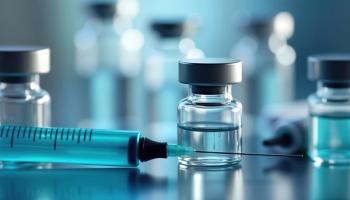
Statin therapy benefits ACS patients with low LDL-cholesterol levels
A study of 155 patients examining the effects of statins on patients diagnosed with acute coronary syndrome (ACS) suggests that statin therapy may increase survival rates and potentially extends the results of larger, recently performed randomized trials to those with low-density lipoprotein cholesterol (LDL-C) levels of 80 mg/dL and below.
A study of 155 patients examining the effects of statins on patients diagnosed with acute coronary syndrome (ACS) suggests that statin therapy may increase survival rates and potentially extends the results of larger, recently performed randomized trials to those with low-density lipoprotein cholesterol (LDL-C) levels of 80 mg/dL and below.
However, researchers who performed the study of University of Michigan Medical Center patients cautioned that further research into the effects of statins on ACS patients is needed. "The results of our study should therefore be interpreted as generating a hypothesis," the authors of the study, which appeared in the American Journal of Cardiology, stated.
Patients who presented with unstable angina or myocardial infarction with LDL-C levels of 80 mg/dL and below were divided into those who were discharged on statin therapy (n=63) and those who were not (n=69).
Researchers used medical records to track patients' conditions while they received in-hospital treatment and then 6 months later with a composite end point of death, reinfarction, or stroke.
No significant differences were found between the 2 patient groups while examining clinical outcomes during in-hospital treatment. However, when comparing the 2 groups after 6 months, the composite end point was reached in 20 patients who had not received statin treatment compared with 6 patients in the group who had received statin treatment (P=.005)
By using a multivariate regression analysis, patients who had received statin treatment upon discharge from the hospital demonstrated an increased survival rate (adjusted OR=0.13; 95% CI, 0.03–0.92; P=.016). The same adjustment also demonstrated an association between statin treatment and a lower incidence of death, reinfarction or stroke (adjusted OR=0.24; 95% CI, 0.07–0.76; P=.016).
These results are consistent with randomized studies including the Pravastatin or Atorvastatin Evaluation and Infection Therapy (PROVE-IT) and Effects of Atorvastatin on Early Recurrent Ischemic Events in Acute Coronary Syndromes (MIRACL) trials, which reported an association between a reduction in cardiac events in ACS patients and high-dose statin therapy. An added finding in the University of Michigan study is that the mean LDL-C level of patients upon hospital admission was 63 mg/dL, substantially lower than those of the 2 larger studies, suggesting that patients with low LDL-C levels may be helped by statin therapy.
One limitation of the study was the lack of specific data on statins and doses among patients due to the retrospective nature of the study. The size of the study population also limited tracking of certain clinical variables such as anemia and diabetes.
SOURCE Tsai TT, Brahmajee KN, Mukherjee D, et al. Effects of statin use in patients with acute coronary syndrome. Am J Cardiol. 2005;96:1491–1493.
Newsletter
Get the latest industry news, event updates, and more from Managed healthcare Executive.





















































